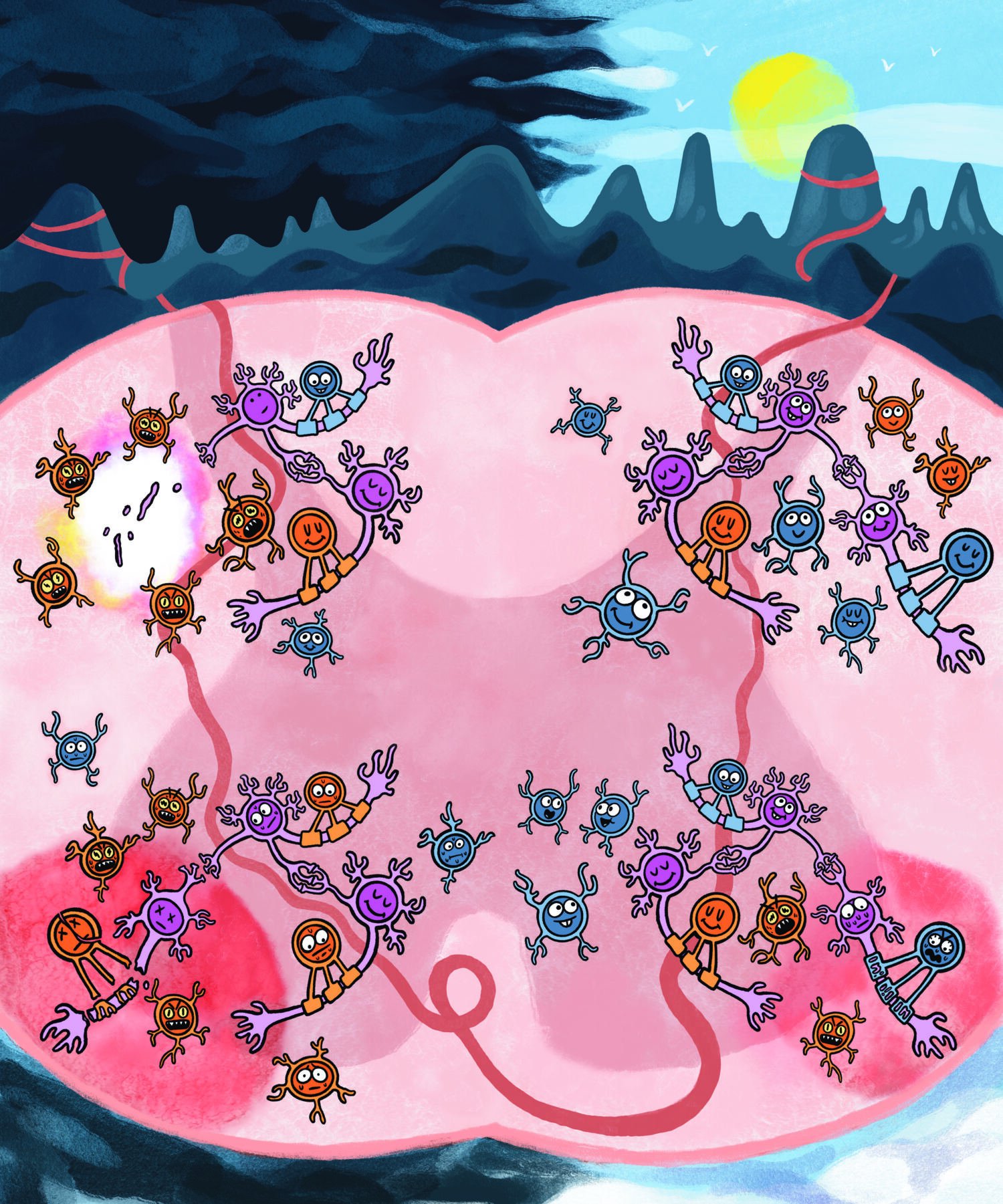Oligodendrocytes show early changes in multiple sclerosis

A new study from Karolinska Institutet, published in Nature Neuroscience, explores how oligodendrocytes, the cells that produce myelin in the brain and spinal cord, respond during the development of multiple sclerosis. By following these cells in a mouse model, the researchers identified distinct disease-related states and gene activity patterns that may help explain how MS progresses at the molecular and cellular level.
Multiple sclerosis is an autoimmune disease where immune cells attack oligodendrocytes, cells that build myelin — the protective coating around nerve fibers that is essential for the fast transmission of information in the brain and spinal cord. The disruption of myelin by the immune cells impairs nervous system connectivity and ultimately triggers MS symptoms.
The Karolinska team had previously discovered that oligodendrocytes in both mouse and human are heterogeneous. In this study, using a mouse model of MS, they followed oligodendrocytes throughout key time points during the development of the disease, analysing them at an individual cell level, and examining at the same time which genes were active and how their activity was regulated at a chromatin level.

“We found that oligodendrocytes transition to disease states already at early stages in this mouse model of MS,” says Gonçalo Castelo-Branco, Professor at the Department of Medical Biochemistry and Biophysics, Karolinska Institutet, who conducted the project with co-first authors Chao Zheng, PhD, and Bastien Hervé, Bioinformatician.
New insights into how MS might develop
The researchers identified that different subtypes of oligodendrocytes react differently to the disease environment, where one oligodendrocyte population is more prone to transition to an immune-like state, while another oligodendrocyte population is possibly more amenable to regenerative processes. Their findings also suggest that these cells, at late stages of the disease, might still retain an epigenetic memory of earlier inflammatory environments.
The findings offer new insights into how MS might develop at the molecular and cellular level — a step forward in the search for earlier diagnosis and more effective treatments for this complex neurological disorder.
This study was funded by the Swedish Research Council, , Knut och Alice Wallenberg Stiftelse, Göran Gustafssons Foundation, Swedish Brain Foundation, Swedish Society for Medical Research, European Research Council, China Scholarship Council,ECTRIMS, National MS Society, Ming Wai Lau Centre for Reparative Medicine, and Karolinska Institutet.
Publication
Distinct transcriptomic and epigenomic responses of mature oligodendrocytes during disease progression in a mouse model of multiple sclerosis
Chao Zheng*, Bastien Hervé*, Mandy Meijer, Leslie Ann Rubio Rodríguez-Kirby, André Ortlieb Guerreiro Cacais, Petra Kukanja, Mukund Kabbe, Tony Jimenez-Beristain, Tomas Olsson, Eneritz Agirre & Gonçalo Castelo-Branco.
Nature Neuroscience Nov 2025
